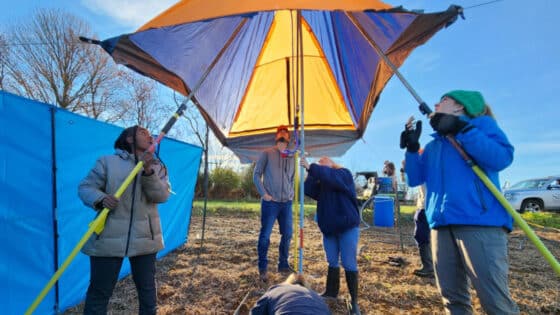Newbold, J.D., J.W. Elwood, M.S. Schultz, R.W. Stark, and J.C. Barmeier. 1983. Freshwater Biology 13(2):193–204.
doi: 10.1111/j.1365-2427.1983.tb00671.x
Abstract
- In order to test for nitrogen limitation and examine ammonium uptake by stream sediments, ammonium hydroxide was added continuously at concentrations averaging 100 μg1-1 for 70 days to a second- order reach of Walker Branch, an undisturbed woodland stream in Tennessee.
- Ammonium uptake during the first 4h of addition corresponded to adsorption kinetics rather than to first-order uptake or to Michaelis- Menten kinetics. However, the calculated adsorption partition coefficient was two to four orders of magnitude greater than values reported for physical adsorption of ammonium, suggesting that the uptake was largely biotic.
- Mass balance indicated that the uptake of ammonium from the water could be accounted for by increased nitrogen content in benthic organic detritus. Nitrification, inferred from longitudinal gradients in NO3, began soon after enrichment and increased dramatically near the end of the experiment.
- Both ammonium and nitrate concentrations dropped quickly to near background levels when input ceased, indicating little desorption or nitrification of excess nitrogen stored in the reach.
- There was no evidence of nitrogen limitation as measured by weight loss, oxygen consumption, phosphorus content, and macroinvertebrate density of red oak leaf packs, or by chlorophyll content and aufwuchs biomass on plexiglass slides. A continuous phosphorus enrichment 1 year earlier had demonstrated phosphorus limitation in Walker Branch.


